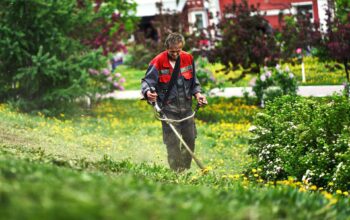Entrepreneur Spencer Schar is the proud owner of a Goldendoodle, who takes up a lot of his time. This article will take a closer look at canine enrichment activities and how they provide mental and physical stimulation to help keep dogs happy and healthy.
Dogs are active, intelligent, and social animals. It is therefore vital to provide them with safe and suitable opportunities to exercise their minds and bodies at every stage in their lives.
There are numerous different types of canine enrichment toys available today catering for dogs of all sizes and needs. For owners who want to keep their dog occupied while they have dinner, an enrichment toy with some of their puppy’s favorite food inside can be an effective means of keeping them entertained. For excitable puppies, a snuffle mat is ideal. Enrichment toys help to keep dogs safe as well as preventing unwanted behavior such as chewing on shoes.
The ultimate goal of canine enrichment is to improve the dog’s overall quality of life. By providing safe opportunities to sniff, chew, dig, hunt, and herd, owners can prevent problematic behavior while simultaneously keeping their pet entertained and healthy. In addition to building confidence, enrichment activities also help to reduce anxiety, as well as strengthening the bond between owner and pet.
Cognitive and mental enrichment games challenge a puppy’s ability to learn, think, and remember. Mental enrichment activities include learning new tricks, exploring new environments, puzzles, and problem-solving exercises. These brain games challenge pets cognitively, keeping their brain engaged. For older dogs they can be particularly helpful, slowing down age-related cognitive decline. Mental enrichment is also beneficial for dogs with behavioral issues, keeping them mentally active to help reduce boredom or anxiety.
Physical enrichment activities center around getting the dog moving and challenging them physically, providing an outlet for their energy and natural instincts. Just like people, dogs benefit tremendously from regular physical exercise, which helps to avoid obesity and other health problems. In addition, physical enrichment is a fun way for owners to bond with their dog, as well as helping to reduce the many problem behaviors associated with a lack of physical activity.
Just like people, dogs are social creatures, and it is essential for them to meet and interact with other people and dogs. Activities that promote positive interactions help dogs to develop and maintain good behaviors and relationships. Walking or playing with other dogs helps puppies to learn how to behave appropriately with other dogs through interaction and play, reducing overexcitement and fearfulness.
Sensory enrichment activities include anything that stimulates the dog’s senses, from feeling different textures and sniffing new smells to exploring unfamiliar places. These types of activities help lessen the risk of problem behavior and anxiety. Introducing puppies and dogs to new and varied experiences helps them to become more resilient and adaptive, reducing the risk of them being startled by unfamiliar sights or sounds.
Food enrichment not only satisfies a dog’s taste buds but can also be mentally stimulating and physically beneficial too. However, when it comes to food enrichment, moderation is key. When using food rewards, it is important to ensure they are dog-safe, watching the dog to prevent accidents or choking.
Enrichment enables puppies and dogs to explore the world using their natural instincts, helping to stave off boredom while building their confidence. Enrichment can also be an effective means of teaching dogs a variety of skills such as agility, searching, and problem solving, as well as helping them learn how to sniff and chew appropriately. Enrichment as an ideal way for puppies to manage their energy, helping them to learn good habits and encouraging calmer behavior.




